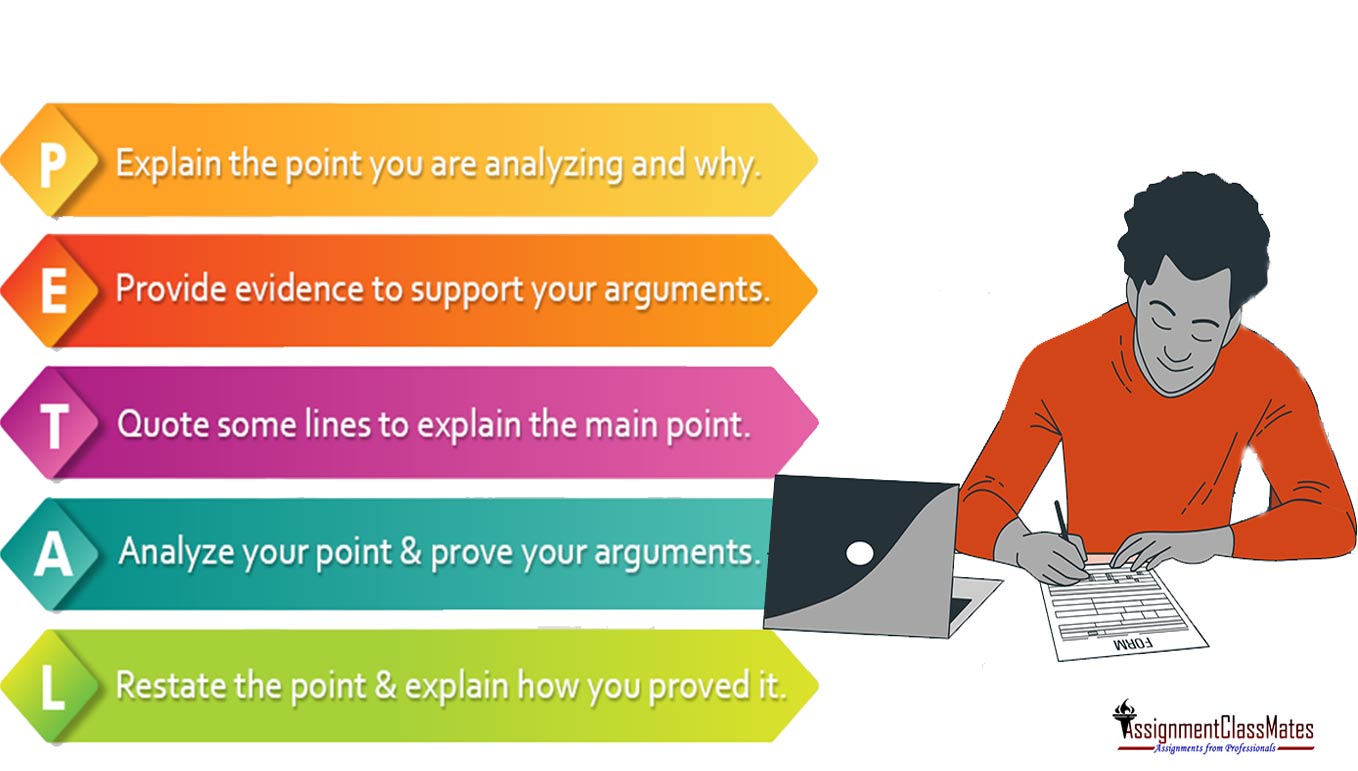Petal Structure
Meaning of petal structure
It's common for professors to recommend that students use one of these forms in the body paragraphs of their essays in English. Why? They are all variants of the same sort of framework that students might follow, which is mnemonics (patterns or words that help us recall an idea or concept). With this in mind, you can guarantee that you cover the most essential points in your body paragraphs. After all, markers will be searching for this structure, and students' adherence to it (or lack thereof) will decide the grade they receive.

Full form of abbreviation PETAL
The mnemonic we’re looking at in particular is PETAL — which stands for Point, Example, Technique, Analysis, and Link.
When writing an essay in English, you must incorporate all of PETAL's components in the body of the essay if you want to get a good grade.
Different steps to generate good petal structure along with examples
Building a Point- Then what is the point? You'll use the Point (also known as a subject sentence) to outline what you're going to argue in the body paragraph. By employing the essential terms, you will answer directly to the essay question and support your argument. How does Ackermann’s poetry represent a battle between culture and identity, for example? In a body paragraph, a topic sentence can be:
On account of the negative impact of British colonization, there is a certain amount of tension between notion and reality in 'Unearth’. As you can see, "persists to a certain degree" is a direct response to the question "to what extent?"The Point must be clear and concise, as the marker will read this first. Petal has five main components, but your body paragraph does not have to be limited to one sentence per component. Sometimes it's better to split the point into two sentences, with the latter introducing the text and the former answering the question directly using the keywords in the first step.
Step 2: Find an example of what you want to create in your text, choose a specific example that supports your claim. Always avoid too long quotes, such as those that are more than a sentence in length, in your writing. There may be a lengthy quote you must include, but you can always use an ellipsis so you don't have to remember as much going into the exam and can concentrate on what's important. According to "Unearth," "excavation holes are dug in our minds."
As much as possible, attempt to find a Technique that displays an understanding of form, such as theatrical techniques for a Shakespearean play. To exhibit better form awareness, employ more than one cinematic style, such as a close-up shot and low lighting. For the first time, in "Unearth," the metaphorical methods of “excavation holes being dug in our thoughts” become a literal approach.
Construct your analysis in the fourth step-This is PETAL's most difficult phase, but it's also one of the most important. Using the question as a guide, analyze the Example and Technique stated above. Try to remember your Point when you're unsure what to say about the Example and Technique. In what way does the example support the argument you've made so far? Was he/she attempting to say with the Example and Technique? It’s important to make sure your Technique relates to your Point, not simply the Example.
Tip #5: Conclude with a link-Write a summary of what you've just said. In any case, it won't simply be you repeating what you said. Put a link back to the original question and answer directly.
It's just that simple! That's it. You'll be well on your way to reaching your English Goals if you use this PETAL paragraph structure.



